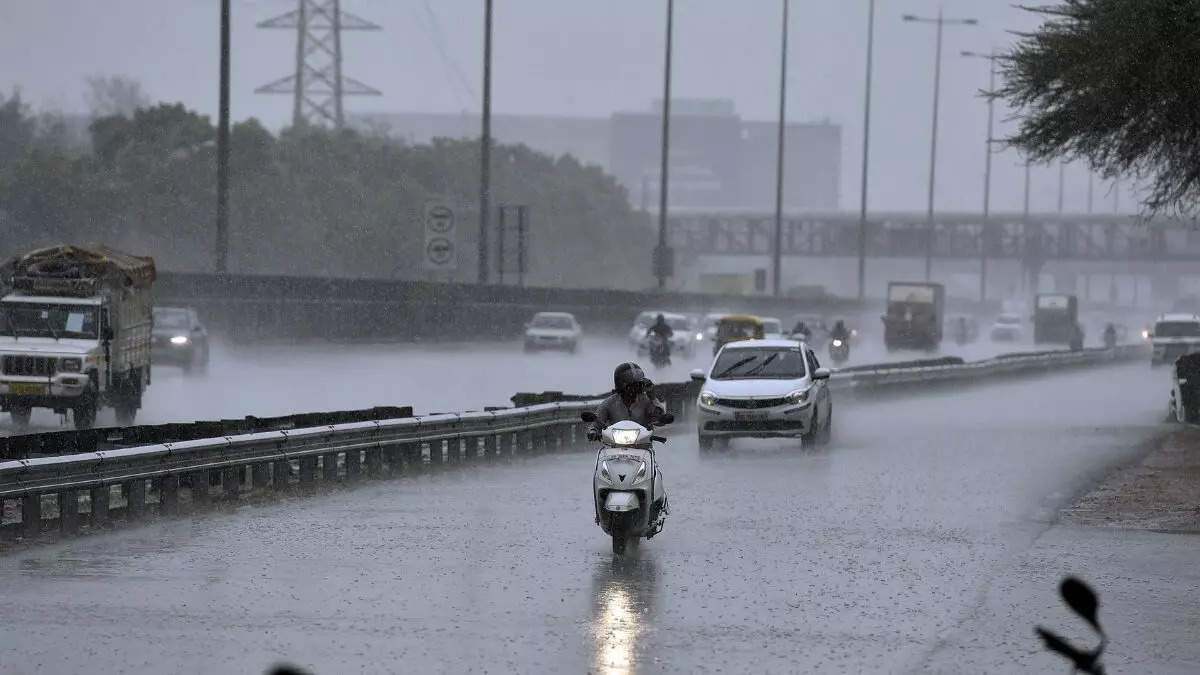Except for northwest India, July rain is expected to be "average," according to IMD

In NEW DELHI: According to the India Meteorological Department (IMD) on Friday, the average monsoon rainfall across the entire country is anticipated to be "normal" in July as opposed to June, when it was "below normal" with a 10% deficit, indicating favourable conditions for farming in the "monsoon core" zone, where sowing is heavily reliant on seasonal rainfall. In terms of weather, July is probably going to be warmer than average across most of the nation.
Though the country's monsoon in July is most likely going to fall on the "positive side" of average (94% to 106% of the long-term average), the forecast of "below normal" rainfall in most of northwest India, specifically Punjab, Haryana, and West Uttar Pradesh, may cause some concern in some areas despite the fact that farming operations in this area are primarily supported by a strong irrigation network.
According to the spatial distribution of rainfall in July, "normal to above normal rainfall" is likely to cover the majority of central India, as well as the adjacent south peninsula, east India, and some areas of northeast and northwest India. This will make it easier for farmers in the "monsoon core" zone to continue their sowing operations.
Delhi awakens to rain, and the IMD anticipates further showers in the area
In contrast, "very likely" "below normal" rainfall is forecast for various regions of peninsular northwest, northeast, and southeast India. Farmers can choose their crops with their reliance on irrigation systems and subterranean water in mind thanks to the forecast.
IMD Director General Mrutyunjay Mohapatra noted "high possibilities" for the emergence of El Nino conditions over the equatorial Pacific Ocean when he released the monthly rainfall and temperature outlook for July.
Surat streets became waterlogged as a result of heavy rain.
Yet, there is a chance that the Indian Ocean Dipole (IOD) would be favourable for the remainder of the monsoon season, aiding it in the latter stage.
IMD forecasted "normal to above average" maximum temperatures (day temperatures) for the majority of the nation, with the exception of several regions of the northwest and peninsular India.
Gujarat is swept by monsoon wrath, leaving 12 dead.
At least 12 people died in the 24-hour period ending Friday evening in Gujarat due to the unrelenting rain, which also almost stopped life in Saurashtra and south Gujarat, where cities and villages turned into bodies of water. At Jamnagar City, which was pummelling by 221mm of rain and submerged under a lake as a result, the monsoon's wrath was particularly terrible, killing four people. With 349 mm of rain falling in Visavadar taluka on Friday, the situation was as dire in Junagadh district.
The transformation of farms and villages into islands utterly halted life. Anjar taluka in Kutch district, which was the area most severely affected by Cyclone Biparjoy, was pummelling by 233mm of rain, followed by Gandhidham with 113mm.
.png)